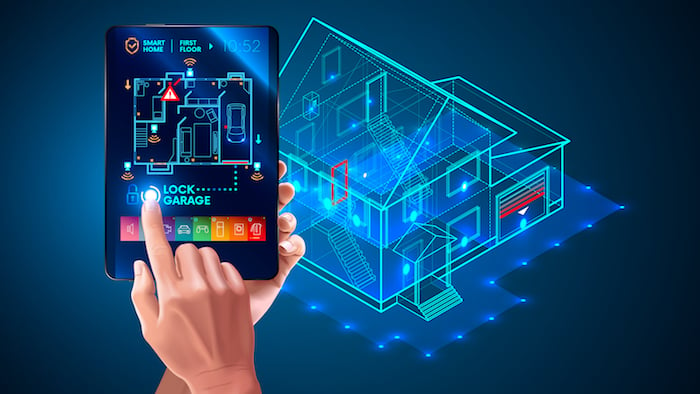- Home
- The Growing Popularity of Smart Homes and IoT Devices
The Growing Popularity of Smart Homes and IoT Devices
The concept of smart homes and the Internet of Things (IoT) has been around for a while, but it is only in recent years that it has gained significant momentum. The ability to connect everyday devices and appliances to the internet has transformed the way we live and interact with our homes. This article will explore the rise of smart homes and IoT devices and how they transform our lives.
What Are Smart Homes and IoT Devices?
A smart home is a residence equipped with electronic devices that can be controlled remotely via a smartphone, tablet, or computer. These devices range from smart thermostats and lighting systems to home security cameras and kitchen appliances.
IoT devices are electronic devices that can connect to the internet, allowing them to communicate with other devices and systems. These devices can include everything from smart locks and doorbells to smart refrigerators and home assistants.
Why the Rise of Smart Homes and IoT Devices?
The rise of smart homes and IoT devices has been driven by several factors, including:
i. Convenience and Comfort
One of the primary reasons for the rise of smart homes and IoT devices is the convenience and comfort they offer. With smart devices, homeowners can control their homes from anywhere, making it easier to manage their homes even when they are not there.
For example, smart thermostats allow homeowners to adjust the temperature of their homes remotely, ensuring that their homes are always at the right temperature. Smart lighting systems allow homeowners to control the lighting in their homes remotely, making it easy to set the mood or save energy.
ii. Energy Efficiency
Smart homes and IoT devices are also helping to promote energy efficiency. With smart devices, homeowners can track their energy usage and make adjustments to reduce their energy consumption.
Smart thermostats, for example, can learn the homeowner's schedule and adjust the temperature accordingly, saving energy when no one is home. Smart lighting systems can also help reduce energy consumption by automatically turning off lights when no one is in the room.
iii. Security and Safety
Smart homes and IoT devices are also helping to promote security and safety. With smart home security systems, homeowners can monitor their homes remotely and receive alerts if any unusual activity exists.
Smart locks and doorbells can also help improve security by allowing homeowners to monitor who is coming and going from their homes. Smart smoke detectors can alert homeowners to potential fires, allowing them to take action before it's too late.
Challenges of Smart Homes and IoT Devices
While smart homes and IoT devices offer many benefits, they also present several challenges, including:
i. Security Concerns
One of the biggest challenges of smart homes and IoT devices is security. With so many devices connected to the internet, there is a risk that hackers could gain access to these devices and compromise homeowners' privacy and security.
To address this challenge, homeowners must secure their smart homes and IoT devices. This can include using strong passwords, updating software regularly, and only purchasing devices from reputable manufacturers.
ii. Complexity
Another challenge of smart homes and IoT devices is complexity. With so many devices and systems to manage, homeowners may need help to keep everything running smoothly.
To address this challenge, homeowners may hire professionals to help them set up and manage their smart homes and IoT devices. This can be expensive, but it can help ensure everything is set up correctly and running smoothly.
iii. Compatibility Issues
Finally, there may be compatibility issues between different smart devices and systems. If devices are not designed to work together, homeowners may find they cannot control everything from a single app or device.
To address this challenge, homeowners should research devices and systems before purchasing them to ensure they are compatible with their existing devices.
Conclusion
In conclusion, the rise of smart homes and IoT devices is transforming the way we live and interact with our homes. While there are challenges associated with these technologies, the benefits they offer in terms of convenience, energy efficiency, and security make them increasingly attractive to homeowners.
As technology continues to evolve, we expect to see even more innovations that will further enhance our homes and improve our lives. However, it is essential that we also address the challenges associated with smart homes and IoT devices to ensure that they are secure, manageable, and compatible with each other.



.png)

What other's say about : How ThePhone thriller..